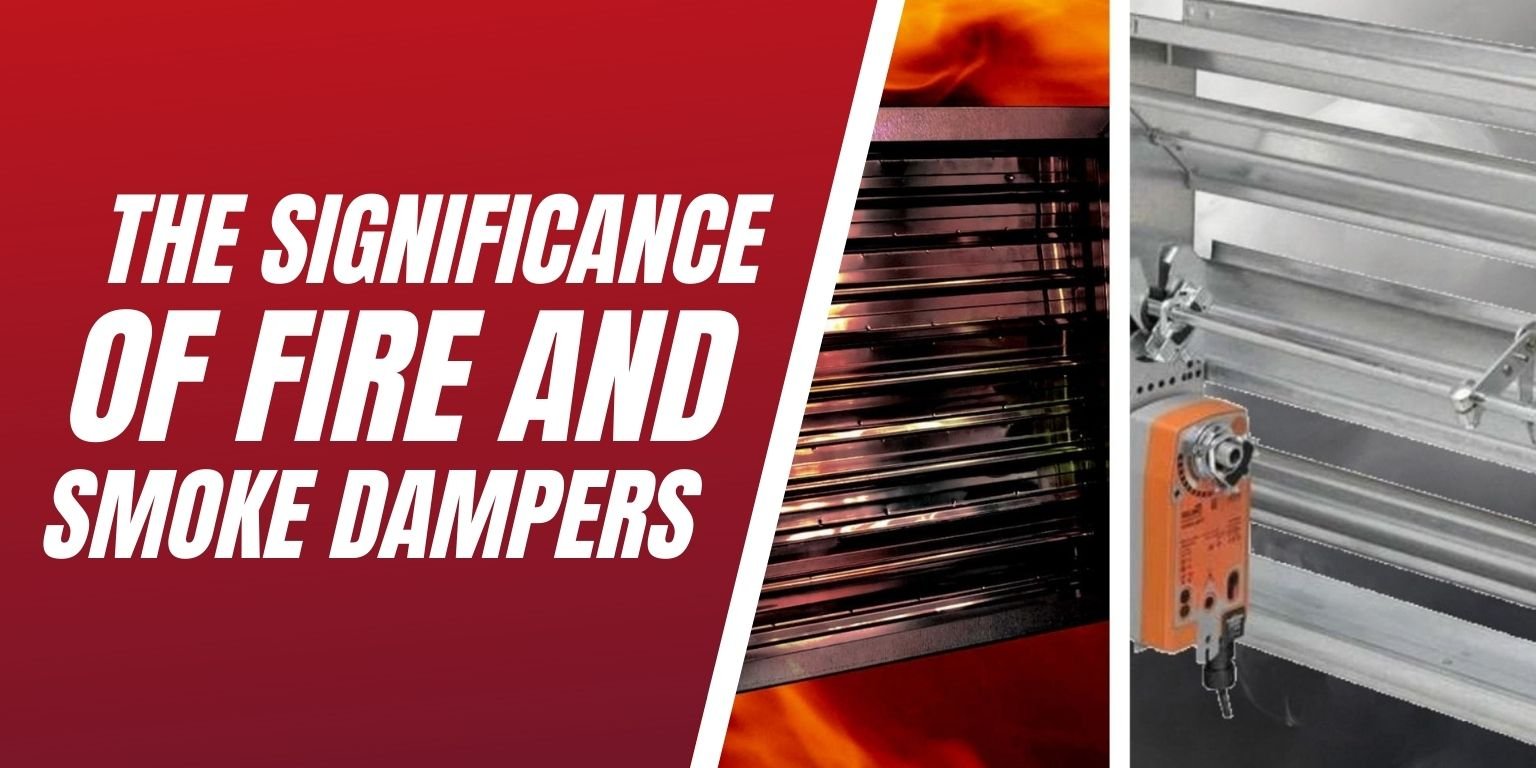
Up above within the ductwork of your facility lie very important fire safety mechanisms, fire and smoke dampers. Fire and smoke dampers play a pivotal role within the passive fire protection system of your facility. They perform a lifesaving function in the event of a fire that should not be overlooked or accidently forgotten about. Required inspection and routine maintenance is critical to the facility staying in compliance.
The ventilation system within a facility is the most common way for fire and smoke to spread throughout a building, this is when dampers come into play. When triggered, the dampers will function to block out the fire and smoke from passing through to any other part of the building and contain the fire at its origin.
Fire Dampers
Fire dampers are installed with the intended function of restricting fire from spreading where ducts and ventilation systems penetrate firewalls, fire barriers, fire partitions and shaft enclosures. There are a couple different types of fire dampers that are used within facilities such as dynamic and static dampers.
Dynamic fire dampers are vertical barrier installations when the HVAC system fan will run continuously during an active fire. These dampers have an hour fire-protection rating along with a maximum velocity and static pressure that the damper is intends to withstand.
Static fire dampers are installed within duct systems/penetrations when the HVAC system shuts down in the event of a fire. This will turn off the fan and gravity will allow the damper to shut. Similarly, to the dynamic damper, static dampers carry an hourly fire-protection rating.
Fire Damper - NFPA 80 – Section 19.4
Each damper shall be tested and inspected one year after installation. The test and inspection frequency shall then be every 4 years, except in hospitals, where the frequency shall be 6 years.
Smoke Dampers
Restricting the movement of smoke throughout ducts and air transfer openings is the sole function of smoke dampers. Typically, these dampers are operated by a smoke detector that sends a signal to the damper actuator that open/closes the damper blades.
There are a variety of smoke dampers that can be utilized in specific situations within a facility. Combination dampers restrict both fire and smoke where ducts and air transfer openings penetrate. Ceiling radiation dampers function to limit heat in fire resistance rated floor or roof assemblies. Corridor dampers is another type of combination dampers that resist fire and smoke. These are specifically designed for mounting purposes in ceiling construction of a tunnel corridor.
Smoke Damper - NFPA 105 – Section 6.5
Each damper shall be tested and inspected one year after installation. The test and inspection frequency shall then be every 4 years, except in hospitals, where the frequency shall be 6 years.
Dampers Save Lives
Dampers will activate when fire and smoke is detected within a facility. Restricting the passage of fire and smoke when a fire breaks out can be life saving to so many building occupants. As we know, fire and smoke can spread fast, faster than people may realize and without these pieces of equipment in place, building occupants would be at a greater risk.
Those caught in a fire need all the time they can get, which is why passive fire protection within a facility is so important as the main goal is to contain the fire at its origin and allow as much time possible for evacuation.
Fire and smoke dampers may be hidden but they require the same amount of attention as any other fire safety feature that you see everyday around the facility. Dampers are known to malfunction during inspection, so be sure to have a knowledgeable professional inspecting and servicing the dampers within your facility. Contact Us Today to schedule your inspection or repair- You’re Safe with Us.

